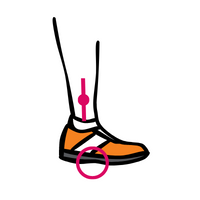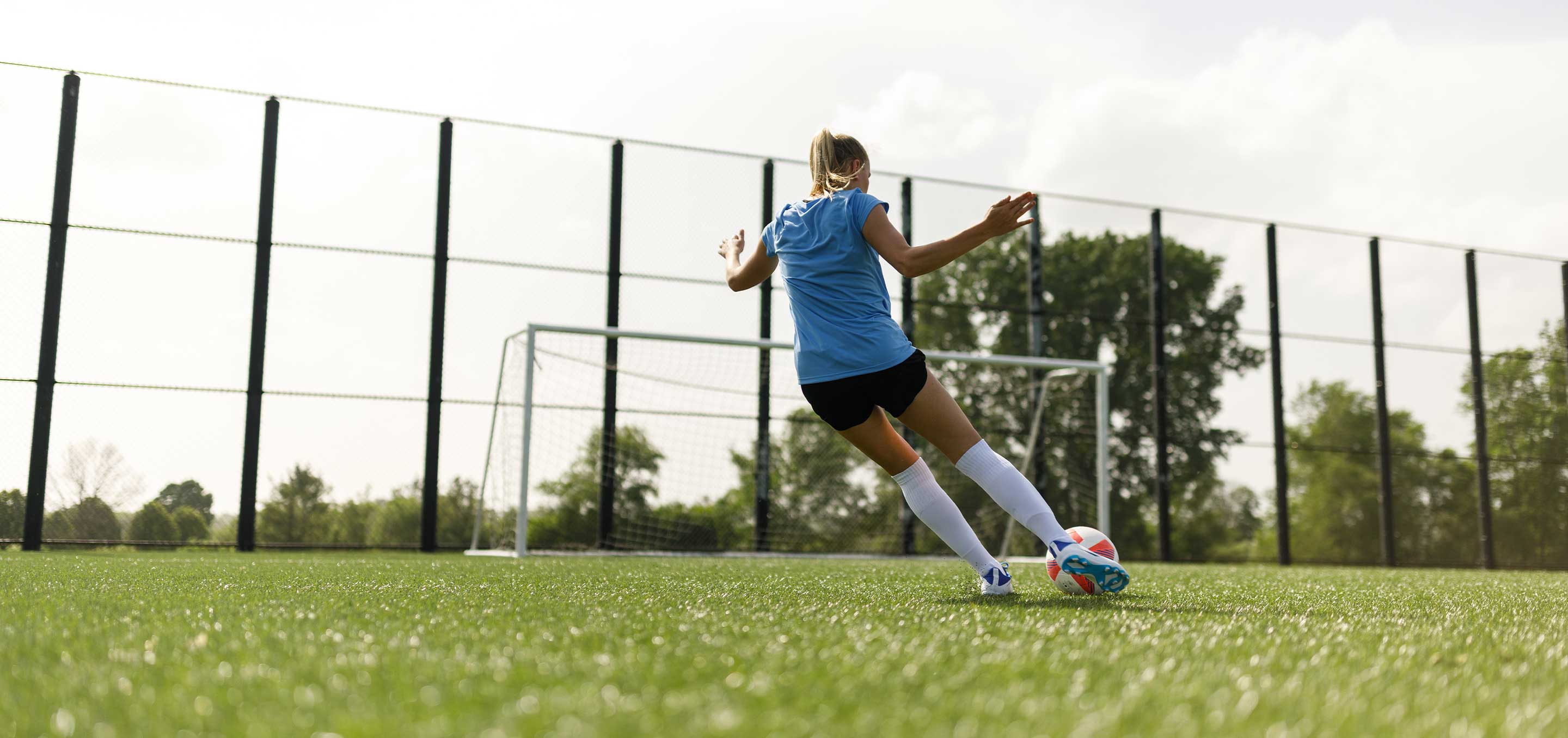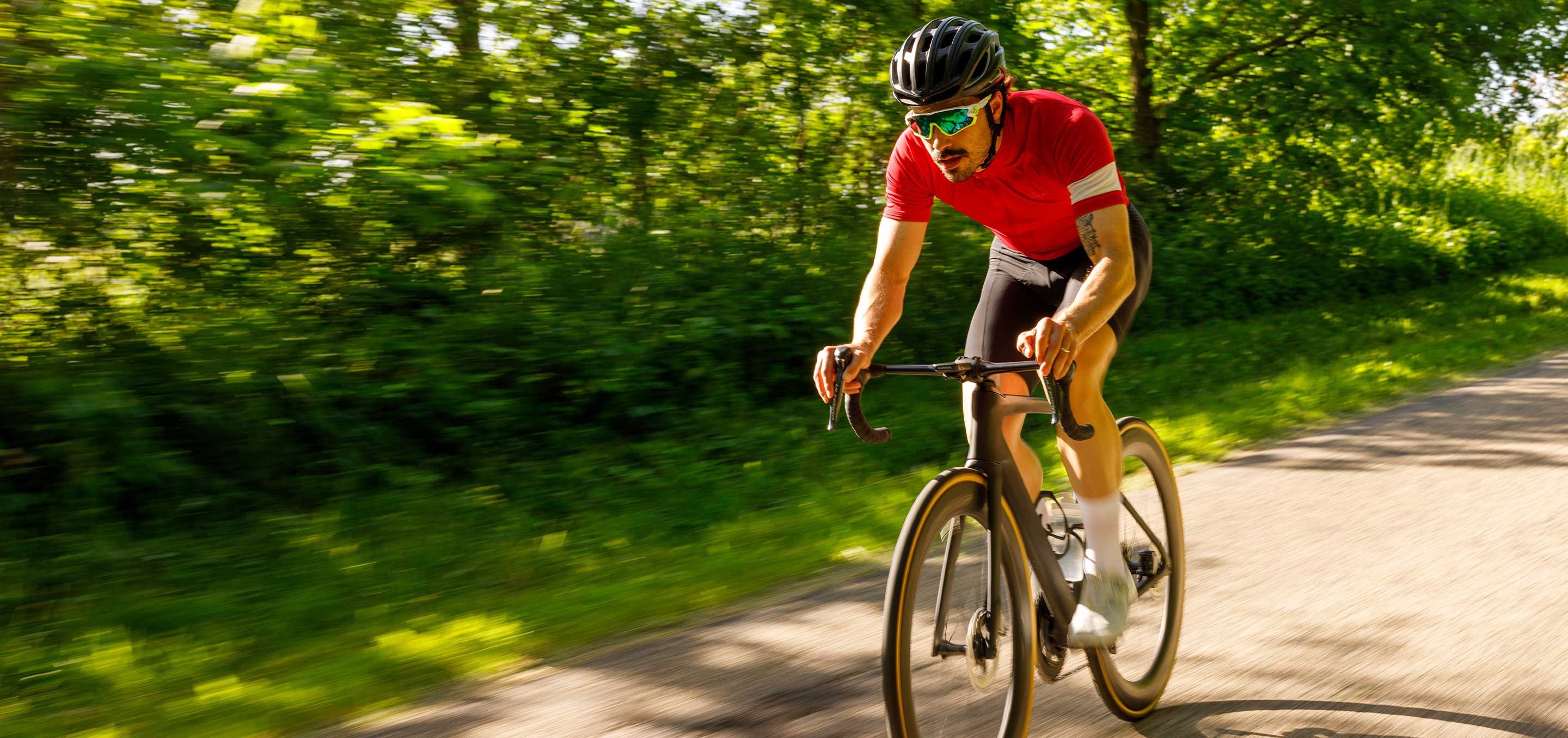The Right Running Foot Strike for Every Runner

What is the best foot strike for running?
The way your foot hits the ground with each step is called your foot strike. For runners, different types of foot strikes may affect speed, energy consumption, and risk of injury. It makes sense that runners may want to change their foot strike to get the best performance possible, but the best foot strike is often the one you’re already doing.
Usually, the only reason to change your running foot strike is to prevent recurring injuries. For a proper running foot strike, instead focus on improving your current running form and use CURREX® RUNPRO™ running insoles for enhanced performance.
This guide to the proper running foot strike covers:
- The three types of foot strikes
- How to find yours
- Changing your foot strike
- The most efficient foot strike for every runner
- Common injuries associated with each type
- How to improve your foot strike

What are the different types of foot strikes?
Your foot strike is almost as unique as you are. Your weight, height, bone structure, and whether you have a history of injury will likely determine what your foot strike pattern is. Here are the three types of foot strikes and how each one can affect your running:
Forefoot Strike

Running on the balls of your feet is called forefoot running. It feels light, springy and quick, making it ideal for sprinters. You'll likely extend your body forward as you run, putting most of your weight on the balls of your feet and toes.
Unfortunately, forefoot running places excess strain on your calves and Achilles tendons which may cause tightness or cramping. While the forefoot strike is great for the 100-meter dash or pushing yourself over a steep incline, it can cause injury for long distance runners.
Midfoot Strike

Midfoot strike running happens when the outside edge of the middle of your foot hits the ground first then flattens so both your forefoot and heel are grounded. This evenly distributes the impact of your foot hitting the ground, and your weight should balance over your hips, knees, and ankles.
Great for distance running, midfoot strike helps you keep a faster, more consistent pace and higher cadence compared to forefoot running.
Heel Strike (Rearfoot)

Heel strike, or rearfoot strike, is when your heel hits the ground first, absorbing all the impact before rolling your body weight onto the rest of your foot. Heel strike running is the most common with over 90% of runners being heel strikers. When you heel strike run, your stride might reach beyond the front of your body also known as overstriding.
The problem with heel striking and why runners try to “fix” it is because it has the highest amount of impact during initial contact with the ground, making it harder on your knees and shins. The biomechanical reason we favor heel strike running is efficiency, explained later on.
Whether you’re a heel striker, a forefoot runner, or a little of both, CURREX running insoles are designed to reduce pressure on your feet and create a more comfortable running experience regardless of foot strike type.
How to Find Your Runner’s Foot Strike with CURREX
Understanding your foot strike is a little more complicated than just knowing it when you feel it. Most runners cannot accurately determine their own foot strike without the help of a few tools or techniques. Specialty run labs devoted to helping runners improve might offer running sensors to wear on your shoes or use foot strike analysis videos to determine your foot strike pattern.

If you don’t have access to one of these labs and want an easy way to find your foot strike that you can do at home, using removeable insoles for running shoes can help. Here is how to use CURREX running insoles or your current removeable insole to help you find your foot strike:
- First, you should be running on your removable insole for some time before you can use it to find your foot strike.
- Remove the insole and look for where the imprint of your foot is strongest, or most worn. You should be able to feel where the imprint compresses.
- The most imprinted or worn areas of the insole are where your foot strikes. This is where the greatest amount of loading force is on your foot.
- Check both the right and left insole as your feet might not have identical striking patterns especially if you have a past foot injury.
If your wear pattern has the most impression at the back of your foot, you are a heel striker. Insoles with the most wear on the front portion of the foot reveal you are a forefoot strike runner. If you are a trail runner or competitive athlete, your wear pattern might be less clear as you change your foot strike as you run to compensate for the terrain, speed, or activity.
Changing Your Running Foot Strike
Studies have shown that changing your running foot strike from a heel strike to a midfoot or forefoot strike is not all that beneficial. It does not significantly improve your running efficiency, reduce your risk of injury, or eliminate impact.
If you want to change your foot strike, first consider changing your running shoes to footwear that’s more suitable for your foot strike type. You can also add a running insole like CURREX RUNPRO to prevent injury and boost your performance.

You may need to change your foot strike if you experience reoccurring injuries or severe foot pain. To do so, work on avoiding common mistakes in your running form and transition slowly. For heel strikers, reduce overstriding and increase your cadence to switch to midfoot or forefoot running.
What is the most efficient foot strike in running?
The efficiency of your foot strike can be measured by metabolic cost and speed. Out of all the foot strike types, heel striking is the most efficient overall except for when you’re sprinting at higher speeds. The heel strike uses up the least amount of energy and uptakes less oxygen to perform, making it more efficient and reasonable according to biomechanics.
If you’re a midfoot striker or forefoot striker, you can still be efficient in your stride. Your natural foot strike pattern is likely the best for you. Your body might even change your foot strike for you to be the most efficient on different types of running surfaces or terrain.
Foot Strikes & Common Injuries
Excess stress on certain areas of your body during strenuous activity can cause overuse injuries. Heel strikers experience the most force of impact in their knees and heels, resulting in knee pain or heel pain from plantar fasciitis. Meanwhile, midfoot and forefoot runners absorb shock in their ankles, which can cause ankle pain.
In 2017, the Journal of Sport and Health Science published research reporting that changing your strike can cause an increase in running injuries. Altering your foot strike pattern puts the force of impact on a different joint that is not used to the force. Therefore, a heel striker who suddenly switches to forefoot running may be more susceptible to an ankle injury.
By strengthening different joints and muscles in your body and wearing a quality running insole, you can avoid injury and ease into a new running foot strike. CURREX running insoles provide cushioned comfort and added stability that can help absorb shock and prevent injury while boosting your performance.
Improving Your Running Foot Strike
Making small improvements to your current foot strike is a sustainable way to improve your efficiency and avoid injury. The proper foot strike in running lessens the braking force in your legs and feet by landing as close to underneath the hips as possible.
Rather than switching to a midfoot strike, try these tips:
- Heel strikers: Increase your running cadence and bring your landing foot closer to your body to prevent overstriding and make your heel strike less aggressive.
- Forefoot strikers: As your foot lands, try to focus the impact lower on the balls of your feet and do not run too high up on your toes unless you are sprinting.
CURREX: Better Performance with Every Foot Strike
How your feet and body move when you run is different from any other runner. You are unique and so is your foot strike. CURREX running insoles are engineered to move with you and your running shoes to help optimize your stride and increase your performance comfortably. Feel confident in your run with CURREX RUNPRO.
References:
Subic, J. (2021, August 6). Foot Strike: The Ultimate Guide. RunRepeat.







